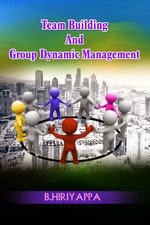PERFORMANCE NEEDS
Performance
and needs are very important to determine the team effectiveness in an
organization: The
following lists the characteristics that comprise high-performance teams:
v To build
commitment to a member of the team’s purpose and partnership by reviewing
issues critical to their development in an organization.
v To develop
guidelines for team productivity by addressing norms for decision making and
limits of authority in the team.
v To create
a collective vision of what your team can become in the next year.
v To build
an action plan to move them toward sustained team effectiveness.
v The
team has a common focus, including clear and understandable goals, plans, activities,
and ways to measure success.
v Roles
and responsibilities are clearly defined for each team member.
v Each
member has clearly defined expectations of other members.
v The
team fully utilizes its resources—both internal and external.
v Members
value each other's differences in healthy and productive ways.
v Each
member is able to give, receive, and elicit necessary feedback.
v The
team members manage their meetings in a productive way.
v The
team is able to reach goals by achieving the necessary results.
